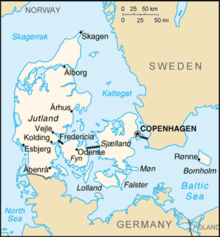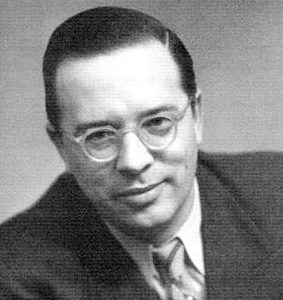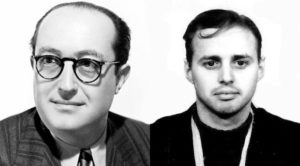 Jews have lived in Denmark since the 17th century. When they first arrived in 1622, Jews were allowed to live only in certain towns, but by 1814, they were granted full Danish citizenship. When Denmark abolished its absolute monarchy in 1849 and adopted its free Constitution, Jews received full political equality, with access to the university, to commercial opportunity, and to social status. They were accepted and respected as full partners in the new democracy.
Jews have lived in Denmark since the 17th century. When they first arrived in 1622, Jews were allowed to live only in certain towns, but by 1814, they were granted full Danish citizenship. When Denmark abolished its absolute monarchy in 1849 and adopted its free Constitution, Jews received full political equality, with access to the university, to commercial opportunity, and to social status. They were accepted and respected as full partners in the new democracy.
The community’s population increased steadily until the middle of the nineteenth century when there were approximately 4,200 Jews in Denmark. Their numbers soon declined to 3,500 in 1900 due to intermarriage and a low birth rate. By 1920, following an influx of Jewish refugees fleeing from pogroms in Eastern Europe, the total Jewish population numbered 6,000.
For almost three and a half years, from the day of Denmark’s occupation on April 9, 1940, through the end of August 1943, Jews living in occupied Denmark enjoyed a relatively stable existence. Danish Jews were not required to register their properties and assets or identify themselves, nor did they have to wear a yellow star or badge. King Christian X was outspokenly supportive of the Danish Jewish community.
 In late September 1943, the Nazis decided that it was time to rid Denmark of its Jews. They planned the raid to coincide with the Jewish New Year. However, Georg Ferdinand Duckwitz, a German diplomat, alerted the Danes, and asked whether Sweden would be willing to receive Danish Jewish refugees. Danish citizens helped over 7,200 Jews (95%) to flee to safety in Sweden by boat. Danish fishermen feared losing their livelihoods and being punished by the Nazis if they were caught, so demanded standard fees up to a third of a worker’s annual salary for Jewish passengers. Danes raised the money for passage.
In late September 1943, the Nazis decided that it was time to rid Denmark of its Jews. They planned the raid to coincide with the Jewish New Year. However, Georg Ferdinand Duckwitz, a German diplomat, alerted the Danes, and asked whether Sweden would be willing to receive Danish Jewish refugees. Danish citizens helped over 7,200 Jews (95%) to flee to safety in Sweden by boat. Danish fishermen feared losing their livelihoods and being punished by the Nazis if they were caught, so demanded standard fees up to a third of a worker’s annual salary for Jewish passengers. Danes raised the money for passage.
 Dr. Karl Henry Koster worked in a hospital outside Copenhagen. He helped bring in Jews under assumed names and illnesses and housed them throughout the hospital. Koster was credited with helping rescue 3,000 people in a three-week period. Jørgen Kieler another Danish physician, rwas involved in the resistance. He helped hundreds of Danish Jews to escape to Sweden and avoid extermination. The medical profession were instrumental in protecting Jews in Denmark.
Dr. Karl Henry Koster worked in a hospital outside Copenhagen. He helped bring in Jews under assumed names and illnesses and housed them throughout the hospital. Koster was credited with helping rescue 3,000 people in a three-week period. Jørgen Kieler another Danish physician, rwas involved in the resistance. He helped hundreds of Danish Jews to escape to Sweden and avoid extermination. The medical profession were instrumental in protecting Jews in Denmark.
Approximately 500 Jews were caught and deported to the Theresienstadt ghetto in Czechoslovakia. Following protests from their government, these Jews were allowed to receive letters and even some care packages. Most of them survived the Holocaust. Most found their homes and businesses as they had left them, since the local authorities refused to permit the Germans to seize or plunder Jewish homes.
In 2016 there were between 6,400 and 8,500 Jews in Denmark. There are three Jewish communities in Copenhagen. The Jewish Community in Denmark, in Krystalgade, the Machsike Hadas, in Ole Suhrsgade and the reform community of Shir Hatzafon in Østerbro. There are a number Jewish organizations and institutions including: a community centre, a café, a library, an industrial kitchen and aged care facilities.